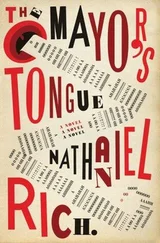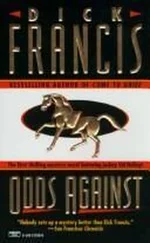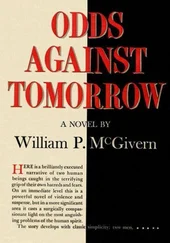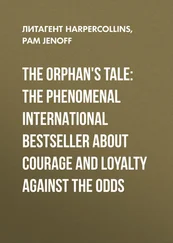Yet he wasn’t certain that was right either. There was no indication of panic in her language. In fact she seemed remarkably composed, equable, cheerful — even strangely reasonable . Nor was there anything remotely flirtatious about the tone. She had gone on about her boyfriend, after all. The whole thing was nonsensical, and though the letter seemed to demand a response, Mitchell didn’t know what to say. He removed from the bottom drawer of his desk the box of company letterhead he had inherited along with the office. Since all his correspondence was conducted electronically, he had never used it — nor, it seemed, had his predecessor, or the one before that, because the pages had acquired a faded, rust-colored border. Under the Fitzsimmons Sherman logo, instead of Mitchell’s name, it read DEPARTMENT OF EQUITY, ASSETS, AND DERIVATIVES. He shuddered. How had the acronym never occurred to him before?
He stared blankly at the page. He wasn’t going to lecture her about all the ways in which she was risking her life, nor suggest that she move to New York City, where she could be examined by the best doctors in the world. That would hardly be tactful. Really he just wanted to ask her how she did it. That is, how did she live each day knowing that because of an electrical glitch, at any moment her heart, for no particular reason, could stop beating? How could she babble on about planting squash and sunflowers while all along hummed the constant threat of annihilation? For all he knew, in the time it took for the letter to reach his desk, she might have had another attack.
Short of discussing any of these things, he’d be forced to write about himself. But there was little worth reporting on that subject. He couldn’t, for instance, explain to her the perverse truth about the day of the Puget Sound earthquake: how, as the chaos burst onto the screen in Cobb Hall, after an initial moment of panic he had been overwhelmed by a profound, almost ethereal sense of calm. That was why he’d been able to help her. For the first time in his life he hadn’t been alone with his fear. On that Tuesday morning everyone was Mitchell Zukor. Everyone obsessed over Richter magnitudes and fatality tolls and worst-case scenarios. He had read that Cassandra, during the sack of Troy — even as the temples incinerated and the women were dragged from their homes by their hair — had watched calmly from behind her loom. He now understood why.
It would be just as distasteful to talk about his work for Sandy Sherman, the worst-case scenarios and death statistics. But that was his whole life: the Empire State Building, his anonymously furnished apartment on East Thirty-seventh Street, and the night terrors that brought on the cockroaches and their quick hairy legs.
It then occurred to him that a single interesting thing had happened. Not extremely interesting — he hadn’t figured out how to deflect incoming asteroids or anything like that. But it was rather mysterious, a pattern of behavior that had no rational explanation but, once initiated, seemed fated to go on indefinitely.
One afternoon during his lunch hour he had found himself, for no particular reason, turning west on Thirty-second Street at Fifth Avenue. It was only two blocks south of his office, but he had not been on that street before. Yong Su, a Korean restaurant a dozen yards from the corner, was serving a dish called bi bim bap. He’d never heard of bi bim bap — for that matter he’d never even eaten Korean food — but he ordered it. Soon a large bowl, the color of bone, was brought to his table. In it was arrayed a pinwheel of pickled vegetables — wedges of bean sprouts, spinach, cucumbers, carrots, mushrooms, and shredded radish — resting on a hassock of steamed white rice. A fried egg on top. It was one of the best things he’d ever tasted.
He returned to Yong Su two days later, then three times the following week. Soon he was there every day. He developed a cordial, well, “friendship” wasn’t the word, but acquaintance with the waitress. Not that he knew her name or anything about her — he wasn’t even sure, now that he thought about it, whether she spoke more than ten words of English. Yet every time he ordered his bi bim bap, she gave him a brief, knowing smile, and he smiled back.
Very quickly Yong Su became the highlight of his day and, to be honest, a not insignificant part of his life. By ten in the morning he was already thinking about his slow, deliberate walk to the restaurant; the satisfaction of placing his order, the three plosive detonations of bi! bim! bap! ; the way the tacky surface of the black vinyl tablecloth clung to his fingertips; the bitter vinegary burst when he bit into the white radish; the waitress’s watery smile. This went on for a month.
Then one day he did something he could not explain. At the entrance to Yong Su, instead of turning inside, he kept walking. It so happened that two doors down, there was another Korean restaurant, Soowon Galbi. Soowon Galbi also served bi bim bap. Mitchell told himself he was there for variation, but he wasn’t sure if that was quite right. As it turned out, the Soowon Galbi bi bim bap was just as delicious as the Yong Su bi bim bap. The waitress at Soowon Galbi was older than her counterpart at Yong Su, but there was something pleasantly maternal about her, and they soon developed their own rapport. After two weeks of committed patronage, she stopped bothering with the menu and, with a wink, delivered a steaming bowl of bi bim bap as soon as he sat down. He found their routine oddly reassuring — or was it reassuringly odd? And yet the next week something must have come over him because he crossed Thirty-second Street and discovered a new restaurant: Moo Dae Po II. The bi bim bap at Moo Dae Po II was excellent. The cycle repeated itself, but now, after three weeks at Moo Dae Po II, he found himself sitting in a booth at Chosan Galbi, pretending to scour the eight-page menu as if he didn’t know exactly what he would order. He figured he’d eat at Chosan Galbi for the next few weeks, get to know the waitress there — who seemed very kind, if not particularly loquacious — and see how he felt then.
Satisfied with this account of his life in New York, Mitchell signed the letter, addressed the envelope to Elsa Bruner care of Camp Ticonderoga, and dropped it in his out-box.
* * *
A week later Mitchell received an old Camp Ticonderoga postcard. The image showed two ten-year-old boys in bathing suits and life vests paddling a canoe across a green lake. A dark wood loomed in the background. The boys were smiling giddily, as if sharing some private hilarity. He turned the postcard over.
“Mitchell,” Elsa had written in her neat, girlish script. “Your note upset me. You seem deeply unhappy. I wonder if Fitzsimmons is the problem.”
She signed it “The Fainting Girl.” Beneath she had drawn a small pencil sketch of a girl lying on the bottom of a canoe, X ’s for her eyes and a large O for her mouth.
Mitchell felt a sharp, almost overwhelming pulse of nausea. But why? He stared at the drawing for several seconds. Then he figured it out. He realized that he couldn’t tell whether the girl in the canoe was supposed to be asleep, or dead.
5.
The subject line read “YOUR PRESENCE.” Body of the e-mail: “REQUESTED.”
The e-mail was not entirely unexpected. Still, as with any communication from his boss, it upset his nerves. Sandy Sherman’s e-mails, with their infantile reliance on the upper case, always seemed like threats.
Mitchell had asked for a meeting with Sherman to discuss his valuation project. Twenty-four hours after Charnoble’s visit, Mitchell had finished calculating the total life worth, in dollars, of every employee on the seventy-fifth and seventy-sixth floors of the Empire State Building. The project finally behind him, he felt he’d earned a chance at Risk. Out of the Basement and into the Penthouse.
Читать дальше












